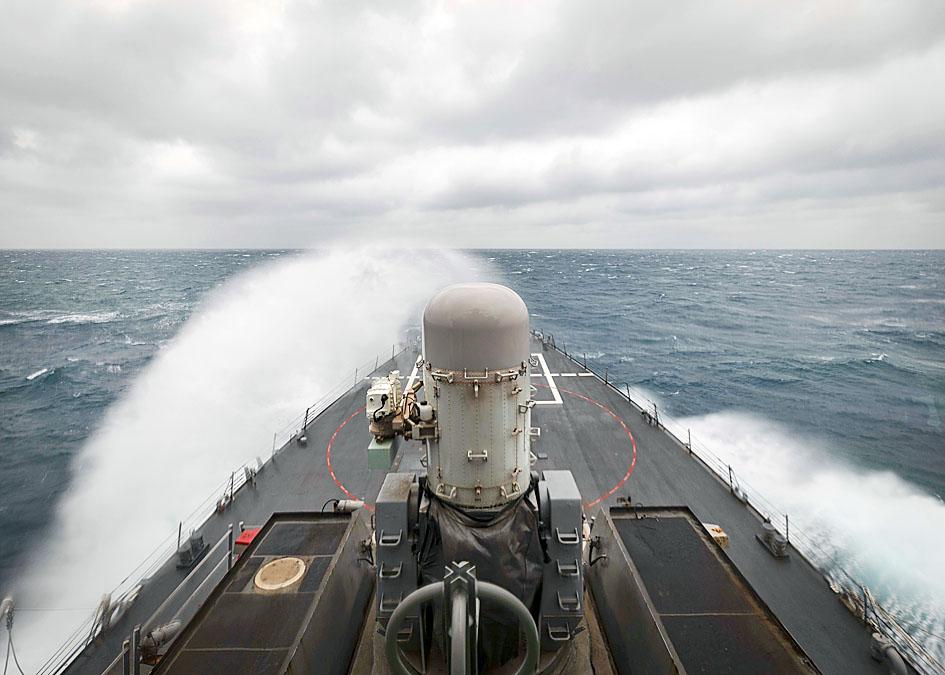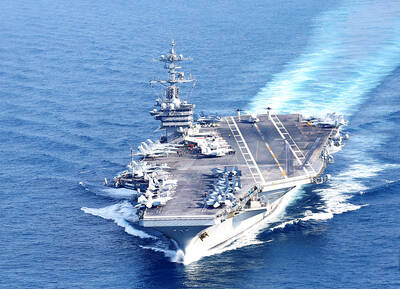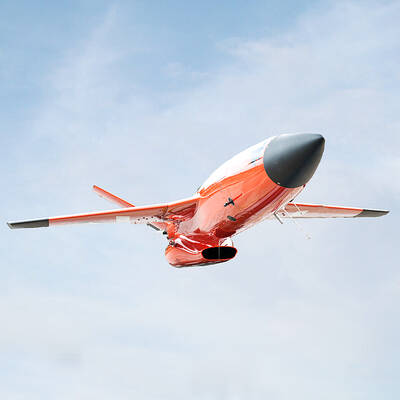The New York-based Council on Foreign Relations (CFR) on Thursday listed a possible conflict between the US and China over Taiwan as a top-tier concern for the first time in its annual Preventive Priorities Survey.
The report assessed the likelihood and effects of 30 potential conflicts that could break out over the next year based on responses from 550 US government officials, foreign policy experts and academics.
Those conflicts are classified into one of three tiers, and the possibility of “intensifying political and economic pressure from China against Taiwan, leading to a severe crisis with the United States,” was classified as a “Tier 1” risk for the first time.

Photo: AP
A US-China conflict over Taiwan was listed as a “Tier 2” risk in 2019 and last year, but was moved up based on its potentially “high impact” on US interests and the moderate likelihood of it occurring, the report said.
A high impact on US interests refers to a contingency that directly threatens the US, a defense treaty ally or a vital strategic interest, and is thus likely to trigger a major US military response, based on the council’s definitions.
A “moderate” likelihood means that there is some chance of an event happening.
By contrast, the possibility of “an armed confrontation in the South China Sea involving China and the United States over freedom of navigation and disputed territorial claims” was downgraded from a Tier 1 to a Tier 2 risk, as it was judged to have a low likelihood of occurring in the coming year.
In addition to a crisis over Taiwan, the council also ranked as Tier 1 contingencies the heightening of military tensions with North Korea over its nuclear program, and an armed confrontation between Iran and the US or one of its allies over Iran’s involvement in regional conflicts and support of militant proxy groups.
Other Tier 1 risks included political instability in Afghanistan, Syria and Venezuela, Russian interference or intimidation against a NATO member, and the possibility of a major cyberattack or terrorist attack on the US.
Paul Stares, director of the council’s Center for Preventive Action, said in the report that the survey is intended to calculate the likelihood of specific contingencies based on the presence of known risk factors.
This ensures that “precautionary measures can be directed toward those [risks] that appear most threatening to lessen the chance that they materialize and reduce the harmful impact if they do,” he said.
The survey only included contingencies in which the US military could plausibly be employed, and therefore excluded other global risks, such as climate change, economic or health-related events, and natural disasters.
It also excluded the risk of domestic unrest or conflict within the US.

CROSS-STRAIT COLLABORATION: The new KMT chairwoman expressed interest in meeting the Chinese president from the start, but she’ll have to pay to get in Beijing allegedly agreed to let Chinese Nationalist Party (KMT) Chairwoman Cheng Li-wun (鄭麗文) meet with Chinese President Xi Jinping (習近平) around the Lunar New Year holiday next year on three conditions, including that the KMT block Taiwan’s arms purchases, a source said yesterday. Cheng has expressed interest in meeting Xi since she won the KMT’s chairmanship election in October. A source, speaking on condition of anonymity, said a consensus on a meeting was allegedly reached after two KMT vice chairmen visited China’s Taiwan Affairs Office Director Song Tao (宋濤) in China last month. Beijing allegedly gave the KMT three conditions it had to

‘BALANCE OF POWER’: Hegseth said that the US did not want to ‘strangle’ China, but to ensure that none of Washington’s allies would be vulnerable to military aggression Washington has no intention of changing the “status quo” in the Taiwan Strait, US Secretary of Defense Pete Hegseth said on Saturday, adding that one of the US military’s main priorities is to deter China “through strength, not through confrontation.” Speaking at the annual Reagan National Defense Forum in Simi Valley, California, Hegseth outlined the US Department of Defense’s priorities under US President Donald Trump. “First, defending the US homeland and our hemisphere. Second, deterring China through strength, not confrontation. Third, increased burden sharing for us, allies and partners. And fourth, supercharging the US defense industrial base,” he said. US-China relations under

The Chien Feng IV (勁蜂, Mighty Hornet) loitering munition is on track to enter flight tests next month in connection with potential adoption by Taiwanese and US armed forces, a government source said yesterday. The kamikaze drone, which boasts a range of 1,000km, debuted at the Taipei Aerospace and Defense Technology Exhibition in September, the official said on condition of anonymity. The Chungshan Institute of Science and Technology and US-based Kratos Defense jointly developed the platform by leveraging the engine and airframe of the latter’s MQM-178 Firejet target drone, they said. The uncrewed aerial vehicle is designed to utilize an artificial intelligence computer

The Chinese Nationalist Party (KMT) caucus yesterday decided to shelve proposed legislation that would give elected officials full control over their stipends, saying it would wait for a consensus to be reached before acting. KMT Legislator Chen Yu-jen (陳玉珍) last week proposed amendments to the Organic Act of the Legislative Yuan (立法院組織法) and the Regulations on Allowances for Elected Representatives and Subsidies for Village Chiefs (地方民意代表費用支給及村里長事務補助費補助條例), which would give legislators and councilors the freedom to use their allowances without providing invoices for reimbursement. The proposal immediately drew criticism, amid reports that several legislators face possible charges of embezzling fees intended to pay